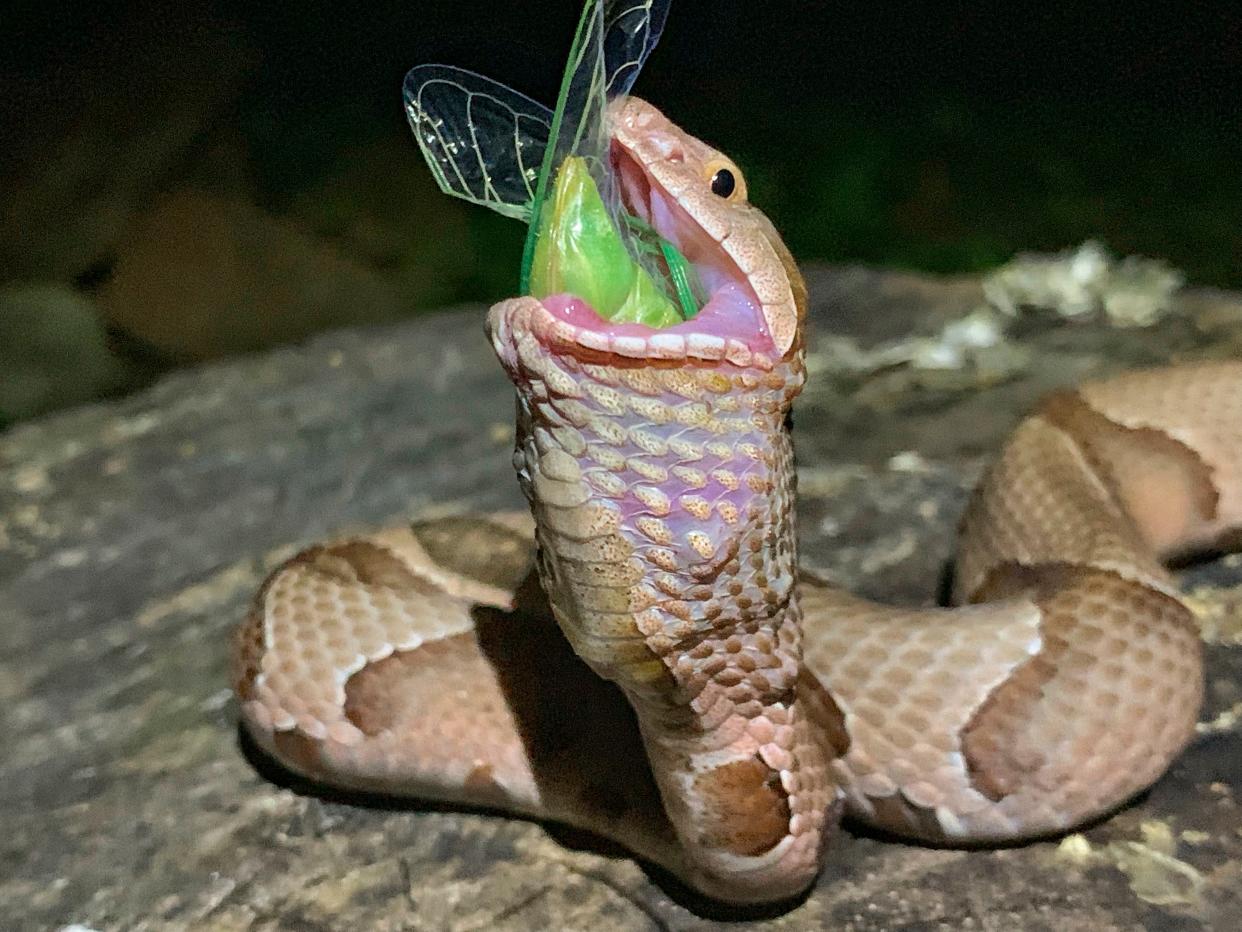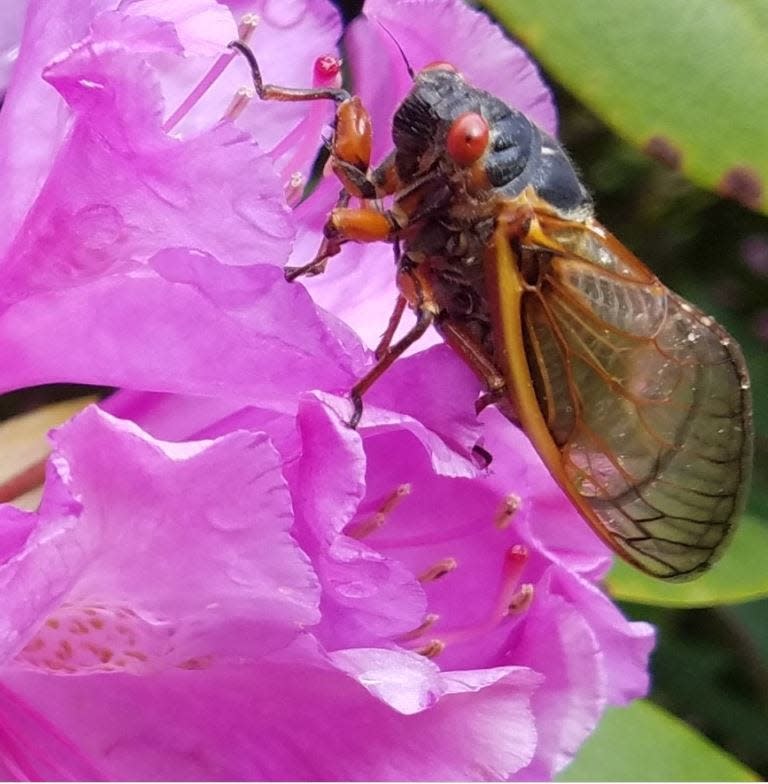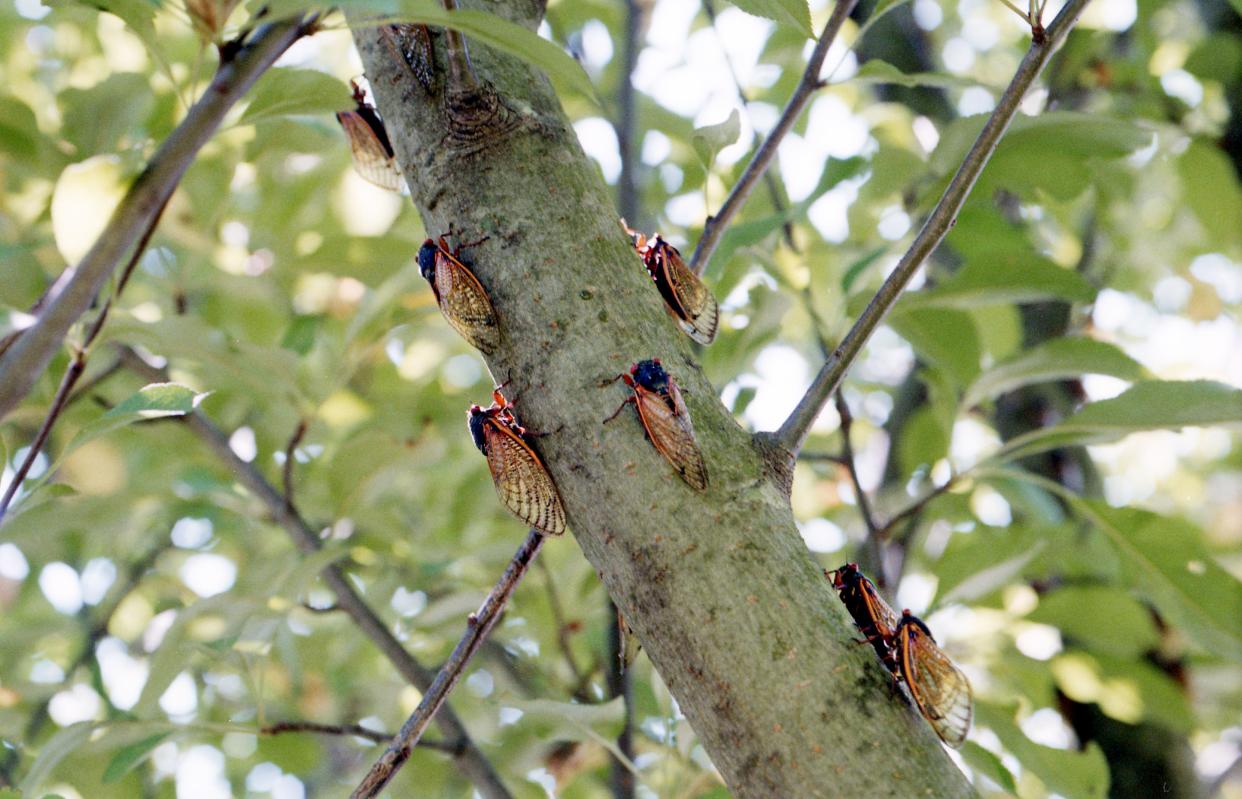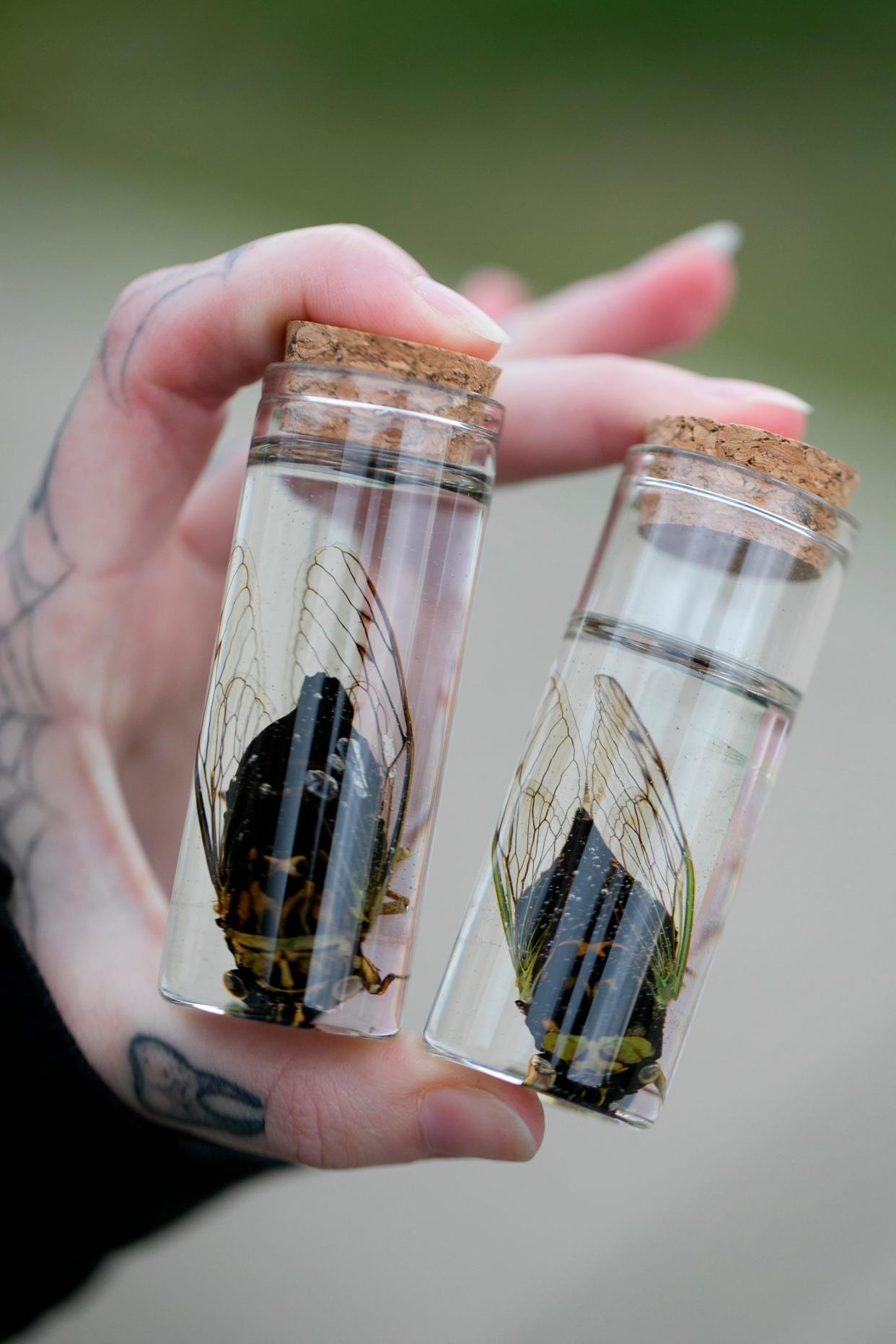Best areas to see cicadas, now that they're emerging in Upstate SC. When will they die?
Now that Brood XIX cicadas have begun to emerge in the Upstate, residents who have spotted the insects in their backyard or garage may be curious to learn more about them.
Can cicadas bite my kids or dog? What is their environmental purpose? And when will they leave? Questions like these are worth getting the answers to before you pick up that can of bug spray and take aim (which will not work in bugging them off, anyway).
Cicadas are found all over the world and in all sorts of weather and environmental conditions. If you haven't caught a glimpse of these unique creatures yet, we have a few ideas of where you can find them. A look at the bug's anatomy can also give you an idea of how something so small is able to produce such a powerful sound.

Where can I see the cicadas?
Excluding Antarctica, cicadas are found across all continents, appearing anywhere from deserts and forests and even urban areas. Periodical cicadas like Brood XIX and XIII are native to eastern North America.
Wildlife Informer lists the following locations that serve as cicada habitats:
∎ Forest canopies
∎ Grasslands and shrubby areas
∎ Wetlands and riparian zones (areas near bodies of water)
∎ Urban environments

How do cicadas produce their sound?
There are over 3,000 cicada species, each one having a distinct sound, according to Britannica. Males are the only cicadas to produce the sound, which is used to establish authority and attract females into mating. Prior to copulation, a courting call is also produced. Another use of sound is to deter predators. Periodical cicadas are louder than annual cicadas due to their large numbers.

The tymbal organ is a part of the cicada anatomy that is distinct from other insects, each male possessing a pair of the circular, ridged members on the back and side surface of the first abdominal segment, according to Britannica. When the tymbal muscle attached to the membrane is contracted, it bends, making a clicking sound. As the muscle relaxes, the tymbal goes back into place. The contractions are rapid in succession, moving 120-480 times a second and creating a sound that seems continuous to the human ear. The sound is amplified by air sacs containing resonant frequencies similar to the tymbal vibration frequencies. This is why cicadas sound like they are buzzing.
When will the cicadas die off?
Once male and female cicadas have mated and the female has laid its eggs, USA TODAY reports the insects will die after spending only five weeks above ground, according to National Geographic. In other cases, adult periodical cicadas live for just three or four weeks, according to Smithsonian Museum of Natural History.
Are cicadas harmful to humans or pets?
Cicadas are not harmful to humans or pets and do not sting or bite, according to the United States Environmental Protection Agency. Although they are not a threat to pets, cats or dogs that consume too many of the tiny creatures may come down with a temporary upset stomach, which may lead to vomiting.
But if you see a cicada, don't squash it ― these buzzing bugs have environmental benefits:
∎ They are a food source for birds and other predators.
∎ They can aerate lawns and improve water filtration into the ground.
∎ When they decompose, they add nutrients to the soil.

Nina Tran covers trending topics. Reach her via email at ntran@gannett.com
This article originally appeared on Greenville News: Cicadas are emerging in Upstate SC: Where to see them
